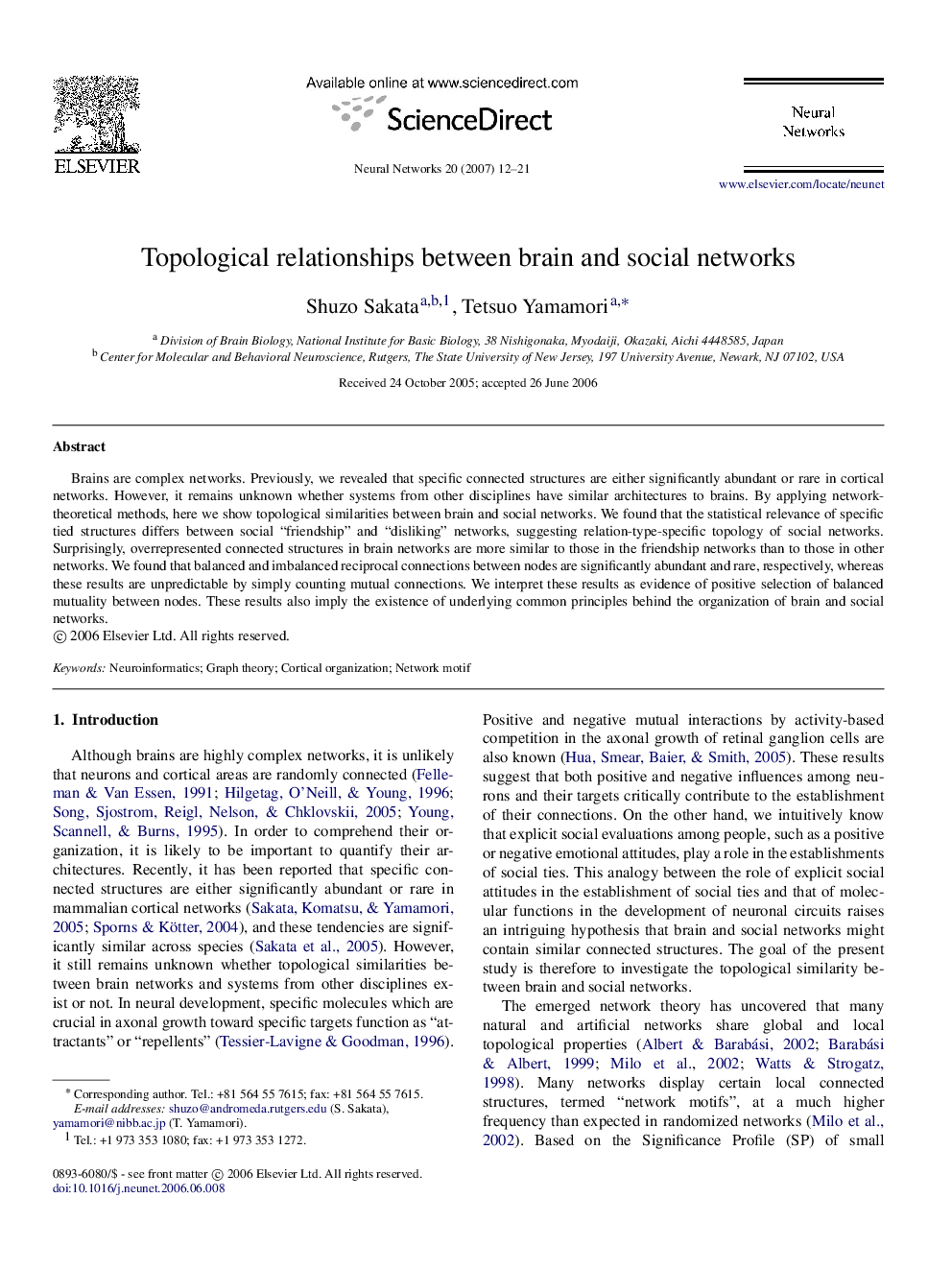| Article ID | Journal | Published Year | Pages | File Type |
|---|---|---|---|---|
| 404921 | Neural Networks | 2007 | 10 Pages |
Brains are complex networks. Previously, we revealed that specific connected structures are either significantly abundant or rare in cortical networks. However, it remains unknown whether systems from other disciplines have similar architectures to brains. By applying network-theoretical methods, here we show topological similarities between brain and social networks. We found that the statistical relevance of specific tied structures differs between social “friendship” and “disliking” networks, suggesting relation-type-specific topology of social networks. Surprisingly, overrepresented connected structures in brain networks are more similar to those in the friendship networks than to those in other networks. We found that balanced and imbalanced reciprocal connections between nodes are significantly abundant and rare, respectively, whereas these results are unpredictable by simply counting mutual connections. We interpret these results as evidence of positive selection of balanced mutuality between nodes. These results also imply the existence of underlying common principles behind the organization of brain and social networks.
